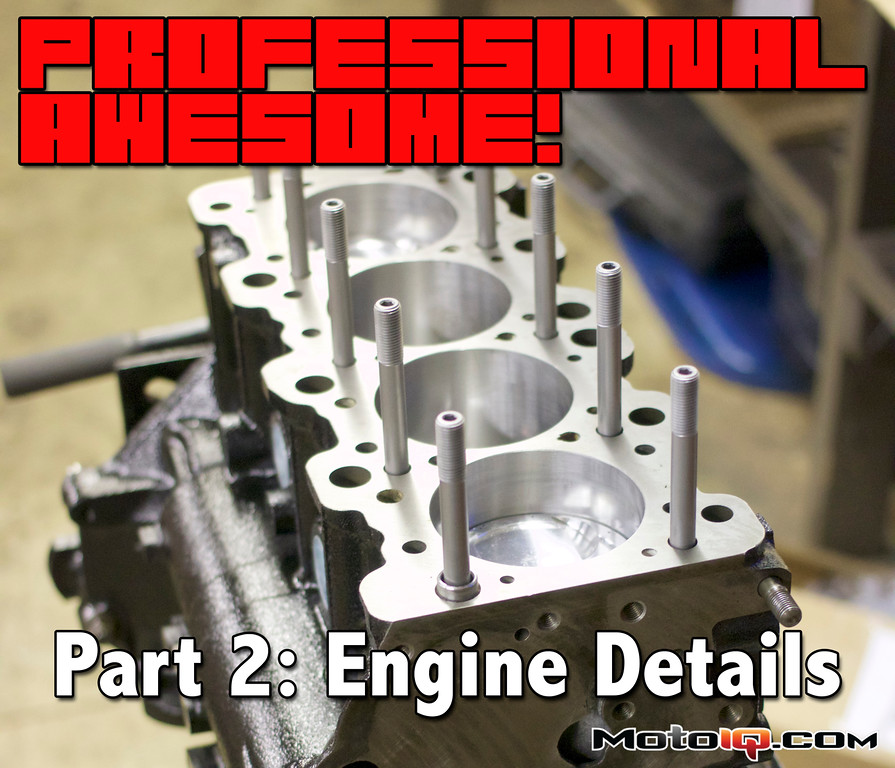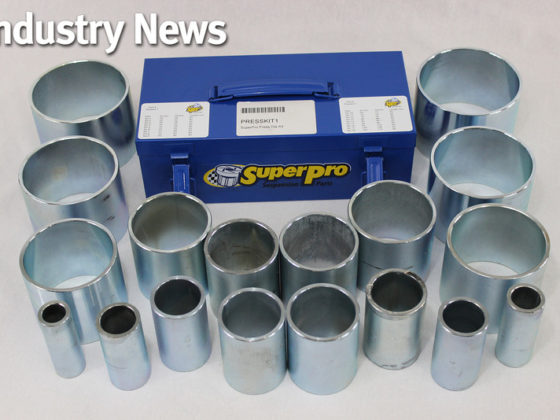,
 The 4G63 block comes with oil squirters from the factory. Our 4G64 block unfortunately doesn't. These can be added though by machining the cast bosses inside the block flat and drilling and tapping into the oil feed. Care needs to be taken to ensure they are installed in the correct position so they don't get whacked by a passing connecting rod!
The 4G63 block comes with oil squirters from the factory. Our 4G64 block unfortunately doesn't. These can be added though by machining the cast bosses inside the block flat and drilling and tapping into the oil feed. Care needs to be taken to ensure they are installed in the correct position so they don't get whacked by a passing connecting rod! We utilized King High Performance bearings for the thrust, mains and rods. We've been very impressed with the technology they are bringing to the sport compact world and will monitor the wear on these closely at the end of the season.
We utilized King High Performance bearings for the thrust, mains and rods. We've been very impressed with the technology they are bringing to the sport compact world and will monitor the wear on these closely at the end of the season.The one issue with this setup is a loss of about 8% displacement on our engine. To combat this, we increased compression to 10.5:1 and due to the reduction in stroke, we could increase the RPM limit as well. On the 2.4L our redline was set to 7500 rpm to keep the mean piston speed at 25 m/s, which is considered a reasonable value to shoot for. For example, the original S2000 was 25.2 m/s and was designed to survive for over 100,000 miles. Doing some maths, we settled on 8500 RPM for the new redline. This works out to ~26.6 m/s for mean piston speed, slightly higher than the previous engine setup, but considering we’d have less angularity on the connecting rods as well as lighter weight pistons, this seemed within reason.
 The short block all assembled and ready to roll. Steve Schmidt racing pays careful attention to the cylinder hone by utilizing a surface finish gauge that measures not just the overall finish, but peaks, valleys, and more! They also were very particular about deck surfaces of both the block and cylinder head to reduce our chances of losing a head gasket.
The short block all assembled and ready to roll. Steve Schmidt racing pays careful attention to the cylinder hone by utilizing a surface finish gauge that measures not just the overall finish, but peaks, valleys, and more! They also were very particular about deck surfaces of both the block and cylinder head to reduce our chances of losing a head gasket.Before the engine was assembled, we looked into ensuring we had good piston ring seal. Manley pistons come with Total Seal rings and we decided to give them a call to discuss ring installation and they were the ones that recommended Steve Schmidt Racing. The recommendation came due to Steve Schmidt’s attention to detail on surface roughness of the hone. They use a special tool to measure roughness and are given values for Ra, Rz, Rpk, Rk, and Rvk. So rather than just an overall surface roughness to shoot for (Ra), they measure the maximum height (Rz), reduced peak height (RpK), core roughness depth (Rk), and reduced valley depth (Rvk) to ensure proper ring seal, oil control and reliability.
 Common in the domestic world of drag and circle racing, gas porting is done to improve ring seal. This improves performance and reliability at the expense of additional wear to the top ring. Steve Schmidt recommended inspecting the engine each season to ensure rings and bearings are in good working order.
Common in the domestic world of drag and circle racing, gas porting is done to improve ring seal. This improves performance and reliability at the expense of additional wear to the top ring. Steve Schmidt recommended inspecting the engine each season to ensure rings and bearings are in good working order. Here is an example of lateral/radial gas porting, which is what we initially intended on doing. This is very common in circle track racing with the domestic crowd.
Here is an example of lateral/radial gas porting, which is what we initially intended on doing. This is very common in circle track racing with the domestic crowd.


